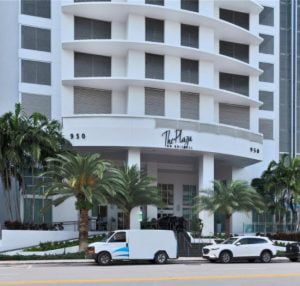40-Year Structural Certifications Florida
EMA Structural Engineer Palm Beach, 40-year structural inspections, 50-year structural inspections, Structural Engineers Fort lauderdale, Structural Engineers Daytona, 40 Year Structural Inspections Palm Beach, 40 Year Building Structural Certification, 50-year Structural Building Inspections, damaged Building structural inspections Florida, Forensic Engineers Orlando, Forensic Engineers Tampa, Forensic Engineers Daytona, Structural Engineers Houston, Structural Engineer New Orleans, Structural Engineer Lake Charles, Forensic Engineer Lake Charles, Forensic Engineer New Orleans, Hurricane Damage Inspections, Infrared Roof Moisture Surveys, Infrared Electrical Surveys, Forensic Engineers Jacksonville > 40 Year Structural Certification Daytona > Uncategorized > 40 Year Building Structural Certification
40-Year Building Structural Certification
40-YEAR STRUCTURAL RECERTIFICATION INSPECTIONS by EMA ENGINEERS.
Tel: 954-361-4524
A structural and electrical inspection is required for all 40-year-old buildings in Miami-Dade and Broward Counties (and every ten years after that). These buildings must be recertified by a registered Florida Engineer or Architect for safety. The inspection aims to minimize structural and electrical failures and be better prepared for hurricane-force winds. The review also helps owners plan for future repairs and renovations.
In the aftermath of Surfside Building Collapse, the building departments in primarily all Florida counties are considering having all 30 40-years or older buildings inspected by licensed engineers to check the structural condition of these buildings. EMA can help you do the 10 & 40-year structural inspections and certification of any high-rise, condominiums, and commercial building in Miami-Dade, Miami, Broward County, Fort Lauderdale, Palm Beach, Boca Raton, Pompano Beach, Hollywood, Port St. Lucie, 40 Year structural certification in Melbourne, Cocoa beach, Daytona Beach, Jacksonville, Tampa, Clearwater, St. Petersburg by licensed Professional engineers. Call now (954) 361-4524
The fundamental purpose of the required inspection and report is to confirm reasonably that the building or structure under consideration is safe for continued use under present occupancy. As implied by the title of this document, this is a recommended procedure, and under no circumstances are these minimum recommendations intended to supplant proper professional judgment. Such inspection shall be to determine the general structural condition of the building or structure to the extent reasonably possible of any part, material, or assembly of a building or
form which affects the safety of such building or construction and supports any dead or live load, or wind load, and the general condition of its electrical systems under the applicable Codes.
There is little need to verify the original design unless there is apparent overloading or significant deterioration of critical structural elements. This has been time-tested if it still offers satisfactory performance. Instead, the effects of time concerning the degradation of the original construction materials must be evaluated. It will rarely be possible to examine all concealed construction visually, nor should such be generally necessary. However, a sufficient number of typical structural members should be reviewed to permit reasonable conclusions to be drawn.
VISUAL EXAM DURING 40-YEAR INSPECTIONS
Visual Examination will, in most cases, be considered adequate when executed systematically. The inspecting professional must conduct the visual examination throughout all habitable and non-habitable areas of the building, as deemed necessary, to establish compliance. Surface imperfections such as cracks, distortion, sagging, excessive deflections, significant misalignment, signs of leakage, and finishing peeling should be viewed critically as indications of possible difficulty.
Testing Procedures and quantitative analysis will not generally be required for structural members or systems except for cases where visual examination has revealed such need or where appropriate loading conditions may be critical. Manual Procedures such as chipping small areas of concrete and surface finishes for closer inquiries are encouraged in preference to sampling and testing where visual inspection alone is
deemed insufficient. Generally, unfinished areas of buildings, such as utility spaces, maintenance areas, stairwells, and elevator shafts, should be utilized for such purposes. In some cases, to be held to a minimum, ceilings or other construction finishes may have to be opened for selective examination of critical structural elements. In that event, such locations should be carefully located to be least disruptive, most easily repaired, and held to a minimum. In any event, sufficient structural members must be examined to afford reasonable assurances that such represent the total structure.
